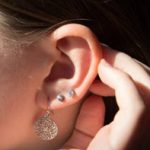What is Forehead Contouring?
Forehead contouring and reduction surgery is one of the most powerful ways to improve your appearance, soften or feminize the face, look youthful, and feel confident. It is one of the most unique surgeries offered by the expert team of double board-certified plastic surgeons at The Spiegel Center in Newton, Massachusetts. In fact, practice founder Dr. Jeffrey Spiegel has innovated methods of shaping the hairline, forehead bones, eyebrows, and eye area that provide remarkable results and are imitated, but never equaled by surgeons worldwide. Masculine foreheads typically have a heavier bony ridge in the glabellar area just above the eyes and beneath the eyebrows. This is often referred to as “brow bossing.” Forehead contouring and reduction surgery involves shaping the forehead bones and orbital bones (bones around the eye) to remove the ridge, open up the appearance of the eyes, and create a more naturally feminine, softer appearance. Or, for those who identify as men but don’t want to look as angry or threatening, the brow ridge can be reduced but not eliminated. And, for those who want a more masculine look, the brow can be enhanced.
COST OF FOREHEAD CONTOURING IN IRAN
While getting cosmetic surgery is beyond most people’s means, medical tourism makes it possible to get an affordable surgery beyond borders. As mentioned earlier, Iran is one of those countries offering high-quality procedures at reasonable prices.
The cost of an average forehead contouring (brow bone reduction) in Iran is between $4,000 and $5,000. This price includes all the related medical expenses including anesthesia, doctor’s visit, surgery, and follow-up fees. So, you’d be able to save from 20% to 50% by traveling to this country for your forehead surgery.
What Happens During The Procedure?
To access the forehead bone, a fine incision is made along, or within, the hairline. When you want to bring the hairline forward, the incision is done in front of the hairline so that the surgeon can preserve all of the hair you have while advancing the scalp and hairline to a more feminine position. This allows us to reshape, round, and refine the hairline. Or, the incision can be made on top of, or towards the back of the head where it is well hidden. Following surgery, some patients will elect to have a few hair grafts transplanted in front of the new hairline for further refinement and camouflage of incisions.
Through this approach, your surgeon is able to reshape the bones around the eye and forehead into the desired shape. Several different techniques are needed in order to get an optimal result since specifics in facial anatomy vary from patient to patient. Utilizing their incomparable expertise, our surgeons reposition the forehead bones while minimizing any disruption of the sinus function. The Spiegel Center has published many of the key research papers describing the safety, effectiveness, and nuances of the procedure.
Forehead surgery has been classified by others into different types. Type III (Type 3) forehead surgery is where the bone is reset to a new, more desirable position. Type I (Type 1) is where excess bone is removed without resetting any bone. Most patients need a Type III surgery procedure, but your surgeon will be able to guide you as to what is appropriate for you. We are proud to have discovered that forehead surgery is the most important procedure for facial feminization and set the industry standard of the safest ways to perform these powerful procedures.
 Different types of forehead contouring
Different types of forehead contouring
As mentioned in the previous section, forehead contouring surgery can be carried out through various methods. They include:
- Bone shaving
Once the brow ridge protrusion is weak, the surgeon may achieve the desired results by shaving (grinding down) the bone. Some patients can benefit from this procedure, others may be recommended to go with other methods.
- Bone reconstruction
In this method, the surgeon removes the bone and reshapes it. The bone is then put and fixed in place with tiny screws. Finally, the surgeon covers this surface with cement to create a flatter frontal surface on the patient’s forehead. The cement also accelerates the healing process of the bone. Most surgeons prefer to use bone cement, which is the patient’s living bone, as it is durable, strong, and easy to be adjusted.
- Forehead augmentation
Once there’s a depression on the patient’s forehead or the forehead is extremely flat, contouring can be achieved through forehead augmentation or implantation.
In this type of surgery, different kinds of materials, like silicone sheet and Gore-Tex, are inserted/implanted on the frontal bone to contour the surface.
As an alternative to forehead augmentation, fat injection can be used to give the patient a natural-looking full forehead. However, this method does not render permanent results.
The Benefits of Forehead Contouring
Patients who opt for the forehead contouring surgery find that there are many benefits associated with this procedure, including:
- They are able to achieve a smoother, sleeker and more feminine shape for their face.
- They are able to enjoy a permanent change.
- The procedure confirms their gender and allows them to live a more authentic life.
- The results offer them improved confidence, which benefits both their professional and personal lives.
- This procedure can be done to lower a receding hairline and/or arch the eyebrows.
- This FFS procedure can be performed alongside other facial feminization surgeries. The most popular FFS procedures to have done in tandem with the brow bone reduction are the tracheal shave, rhinoplasty or jawline slimming procedures.
Preparing for Surgery
In the weeks leading up to your surgery, it is important that you prepare yourself both physically and emotionally for the procedure. These are some steps that you should take:
- Talk with your surgeon about taking HRT prior to your surgery. Depending on the procedure, you may need to stop some medications several days leading up to the surgery. Your physician and your surgeon can provide you with specific instructions regarding HRT.
- Consult with your doctor about any medications that you are taking to determine if you can continue taking them prior to the procedure.
- Avoid smoking and do not drink excessively in the weeks leading up to the procedure. Your body should be in good physical and emotional health for the surgery.
- You may be required to fast prior to the procedure due to the use of anesthesia. Your surgeon will tell you when you need to stop eating and drinking before the surgery.
Recovery After Surgery for Forehead Contouring
The forehead contouring procedure is a major surgical procedure, and patients should be prepared to endure a recovery that may last for between 2 and 4 weeks. The exact length of the recovery process will depend on the amount of work that was performed and the number of FFS procedures that were completed at once.
While the forehead contouring surgery is an outpatient procedure, due to the nature of the surgery, there is the potential for an overnight stay. You should discuss this possibility with your surgeon in advance and prepare accordingly.
In most cases, you will be able to resume your normal daily activities within 4 to 6 weeks. However, you may find that you experience forehead numbness for up to a year while your body heals.






























